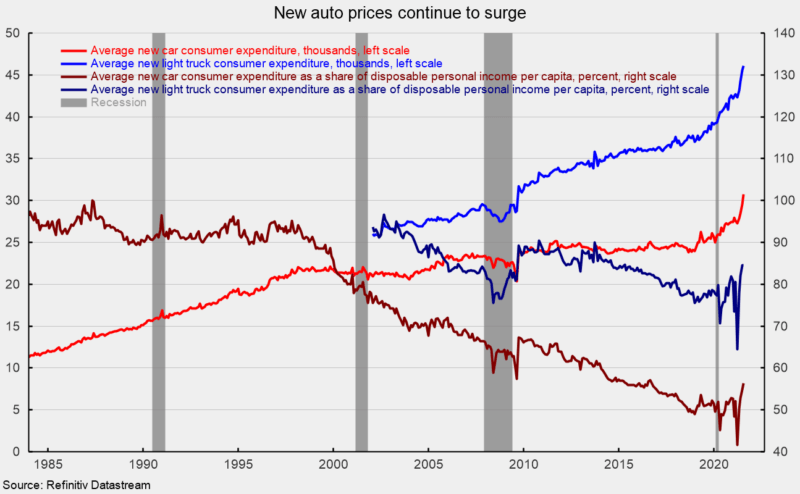Sales of light vehicles totaled 13.1 million at an annual rate in August, down from a 14.6 million pace in July. The August result was the fourth consecutive decline and third straight month below the 16 to 18 million range (see top of first chart). Falling auto sales is largely a result of component shortages that have limited production, resulting in plunging inventory and surging prices.
Breaking down sales by origin of assembly, sales of domestic vehicles fell to 9.8 million units versus 11.0 million in July, a drop of 10.7 percent, while imports fell to 3.27 million versus 3.66 million in July, a drop of 10.5 percent. The domestic share came in at 74.9 percent in August versus 75.0 in July (see bottom of first chart).


Component shortages, especially computer chips, have disrupted production for most manufacturers, creating a scarcity for many models, leading to lower inventory and higher prices. Ward’s estimate of unit auto inventory came in at 151,400 in July, the lowest on record (see second chart). The Bureau of Economic Analysis estimates the inventory-to-sales ratio has fallen to a record low 0.683 for July (see second chart).
The plunging inventory levels are pushing prices higher. The average consumer expenditure for a car was $30,729 in July while the average consumer expenditure on a light truck rose to $46,058 (see third chart). The July levels represent 12-month gains of 13.3 percent and 11.7 percent, respectively.
As a share of disposable personal income per capita, average consumer expenditures on a car jumped to 56.4 percent versus just 41.6 percent in March 2021 while the average consumer expenditure on a light truck as a share of disposable personal income per capita jumped to 84.6 percent versus 64.5 percent as recently as March 2021 (see third chart).




